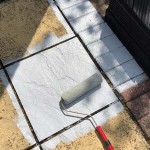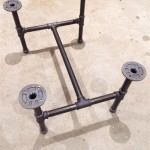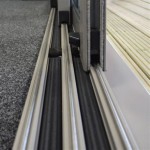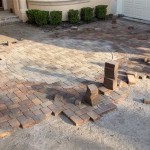Sealing Concrete Patio: A Guide to Enhance Protection and Aesthetics
A well-sealed concrete patio not only enhances the aesthetics but also protects the surface from wear and tear, weathering, and stains. Sealers penetrate the concrete pores, creating a barrier that prevents moisture and harmful substances from penetrating the surface. By following the steps outlined in this guide, you can ensure a long-lasting and beautiful concrete patio for years to come.
Importance of Sealing Concrete Patios
Concrete patios are subjected to various external factors that can compromise their integrity and appearance. These include:
- Moisture penetration: Moisture from rain, snow, and humidity can penetrate concrete pores, causing cracks, spalling, and efflorescence (white crystalline deposits).
- UV radiation: Sunlight can break down the concrete surface, leading to fading, discoloration, and weakened structure.
- Chemical exposure: Oils, grease, acids, and other chemicals can stain and damage concrete surfaces.
- Foot traffic and wear: Heavy foot traffic can create scratches and abrasions on the concrete, reducing its aesthetic appeal and compromising its structural integrity.
Sealing the concrete patio forms a protective barrier against these harmful elements, extending the lifespan of the surface and maintaining its aesthetic value.
Choosing the Right Sealer
There are various types of sealers available, each with its own advantages and disadvantages. The best sealer for your concrete patio will depend on factors such as the condition of the surface, desired finish, and expected level of exposure to traffic and weather.
- Penetrating sealers: These sealers penetrate deep into the concrete, creating a hydrophobic (water-repellent) barrier. They are invisible after application and provide excellent protection against moisture and stains.
- Film-forming sealers: These sealers create a thin, protective film on the surface of the concrete. They offer good protection against weathering, UV radiation, and abrasion but may be less resistant to moisture penetration.
- Topical sealers: These sealers are applied to the surface of the concrete and provide limited protection against moisture and stains. They are primarily used for decorative purposes.
Step-by-Step Sealing Process
- Clean the concrete surface: Remove dirt, debris, and any existing stains from the concrete surface using a power washer or concrete cleaner.
- Repair any cracks or damage: Fill in any cracks or damage with a suitable concrete repair product.
- Etch the concrete surface (for penetrating sealers): If using a penetrating sealer, lightly etch the concrete surface using a muriatic acid solution to open up the pores and enhance penetration.
- Apply the sealer: Apply the sealer according to the manufacturer's instructions, using a brush, roller, or sprayer. Allow ample time for the sealer to penetrate the concrete.
- Allow the sealer to cure: Most sealers require at least 24 hours to fully cure. Protect the surface from traffic and moisture during this period.
Maintenance and Re-Sealing
To maintain the protective benefits of the sealer, regular cleaning and periodic re-sealing are essential. Clean the concrete patio regularly with soap and water or a mild detergent. Re-seal the surface every 2-5 years, or more often in areas with heavy traffic or exposure to extreme weather conditions.

Why You Should Seal Your Concrete Driveway Or Patio Gleam Team

Pros And Cons Of Sealing Concrete Patios

Concrete Stain And Sealer Patio Makeover Exchange

Beautify And Protect Your Patio
Why You Should Seal Your Concrete Driveway Or Patio Gleam Team

Professional Concrete Sealing Types Methods In Atlanta

Choosing The Right Concrete Sealer For Job Decor

How To Seal Concrete For A Uniform Appearance Decor

How Often Should You Reseal Your Concrete Increte Of Houston

How To Seal A Concrete Patio
Related Posts








